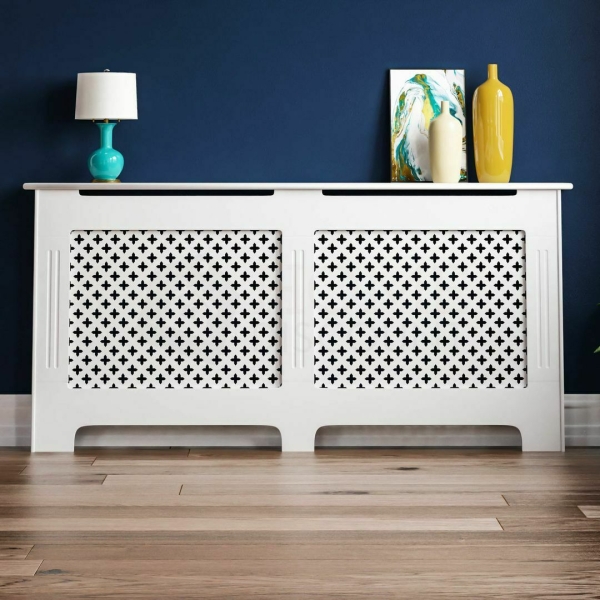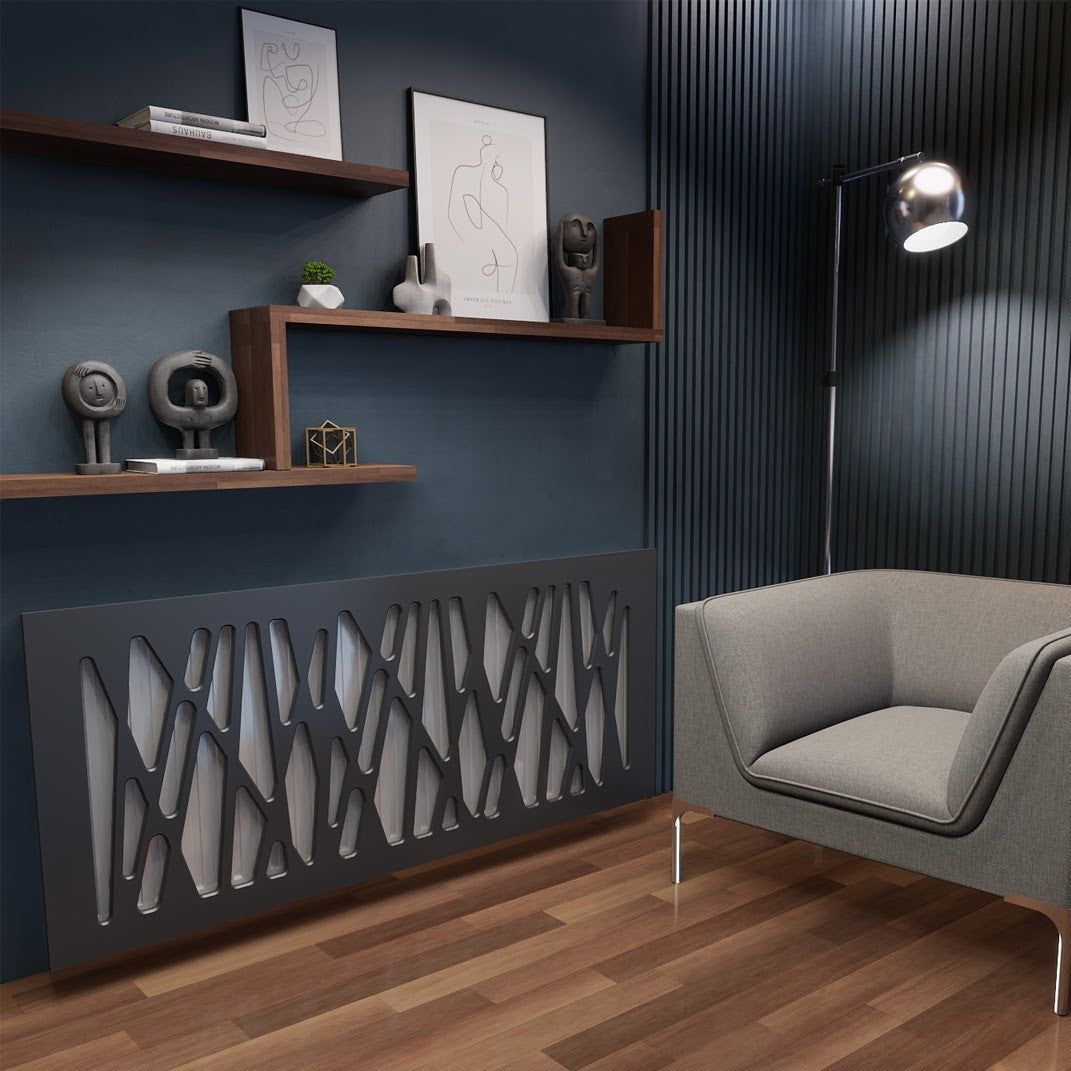Radiator Cover Solutions for Tiny and Huge Areas
Radiator Cover Solutions for Tiny and Huge Areas
Blog Article
The Relevance of Radiator Covers: A Practical Overview for Homeowners
Radiator covers are often a neglected element in home design, yet they serve multiple crucial functions that warrant focus. Past improving security by alleviating the danger of burns, these covers can considerably enhance energy performance and complement various visual styles. Understanding the kinds available and the materials best suited for your room can transform an utilitarian function into an essential part of your home's style. As you take into consideration the effects of integrating radiator covers, you may locate on your own questioning which alternatives line up finest with your needs and choices.
Benefits of Radiator Covers
Enhancing both appearances and functionality, radiator covers offer an array of advantages for homeowners. By covering potentially warm surface areas, radiator covers aid to prevent unexpected burns, specifically in houses with family pets or kids.
In enhancement to safety and security, radiator covers can add to energy efficiency. By directing warm into the space instead than permitting it to dissipate right into wall surfaces or windows, these covers can help maintain an extra regular temperature. This efficiency can result in decreased heating expenses, as house owners might discover they can reduce their thermostat settings without compromising comfort.

Kinds of Radiator Covers
Radiator covers can be found in a variety of types, each designed to meet specific needs and aesthetic preferences of property owners. The most typical styles include conventional, contemporary, and customized options. Traditional radiator covers frequently feature elaborate designs and classic materials, appropriate for period buildings or homes with classic design. They normally consist of wooden structures with decorative grilles, allowing heat to flow while improving the space's charm.
Contemporary radiator covers, on the other hand, are identified by smooth lines and minimal designs, typically made from metal or crafted timber. These covers are optimal for modern homes, supplying a clean and practical appearance that matches existing interior decoration fads.

Customized radiator covers permit property owners to customize the layout to fit special rooms or personal tastes. These can be crafted from various materials and can accommodate non-standard radiator dimensions, making certain a perfect fit within the decoration of the home.
In addition, some covers incorporate multifunctional functions, such as integrated shelving or seating, optimizing energy while maintaining visual charm. Inevitably, the type of radiator cover selected can dramatically influence both the functionality and style of living areas.
Choosing the Right Material

Wood covers, commonly preferred for their traditional appearance, offer natural warmth and can be stained or repainted to match existing design. Metal covers, on the other hand, are heat-resistant and durable, making them excellent for high-performance home heating systems.
Eventually, the choice of product ought to consider aspects linked here such as space style, climate, and the intended usage of the room. By selecting the right product, house owners can improve both the functionality and visual charm of their radiator covers.
Installation Idea
Proper installment of radiator covers is crucial for ensuring their capability and longevity (Radiator cover). Initially, determine the measurements of your radiator specifically to pick a cover that fits snugly you could try here without blocking air movement. Use a degree to validate that the surface where the cover will rest is also
Begin the setup by getting rid of any existing blockages or covers. Make sure that the cover does not obstruct accessibility to them if your radiator has valves. For wooden covers, pre-drill holes for screws to protect against splitting, and use proper bolts that can sustain the cover's weight. When mounting, make certain that the cover is safely connected to the wall or floor to stop tipping.
If your radiator is situated under a home window, think about leaving a tiny space at the end of the cover to help with air flow. Additionally, avoid positioning hefty items in addition to the radiator cover, as this can endanger its architectural honesty. Inspect your installation periodically to ensure that the cover remains firmly in area and does not restrain the radiator's performance. Adhering to these ideas will certainly assist you attain an effective installment, boosting both aesthetics and efficiency.
Preserving Your Radiator Covers
Routine upkeep of your radiator covers original site is essential to ensure their long life and aesthetic charm. To keep your radiator covers, begin by dusting them consistently with a soft cloth or microfiber duster.
Regularly, it is a good idea to carry out a much deeper tidy. Remove any type of detachable panels and wash them with cozy soapy water. Guarantee they are completely dry prior to reattaching to stay clear of moisture-related issues. Furthermore, check the covers for any signs of damage, such as dents or scrapes. Attending to these issues promptly can stop further damage.
If your radiator covers are painted or finished, think about reapplying paint or sealant every few years to preserve their safety layer. This not just improves their appearance however likewise safeguards against rust and corrosion. Be mindful of positioning hefty items on top of the covers, as this can lead to warping or flexing. By complying with these upkeep methods, you can extend the life of your radiator covers and maintain your home looking its ideal.
Conclusion
Finally, radiator covers play a considerable role in enhancing safety and security, power efficiency, and aesthetic allure within property spaces. By optimizing and protecting against unexpected burns heat circulation, these covers add to overall convenience while potentially lowering heating costs. The selection of readily available styles and products makes sure compatibility with diverse home decors. Correct setup and maintenance additionally enhance their effectiveness and long life, making radiator covers a useful investment for home owners seeking both functionality and style cohesion.
By covering potentially hot surface areas, radiator covers aid to prevent unintentional burns, specifically in houses with pet dogs or children.Furthermore, radiator covers serve as an attractive component, perfectly integrating radiators right into the total layout of a room. Traditional radiator covers typically feature traditional materials and detailed layouts, ideal for duration homes or homes with vintage design. By choosing the best material, property owners can improve both the performance and aesthetic appeal of their radiator covers.
For wooden covers, pre-drill holes for screws to prevent splitting, and use appropriate bolts that can sustain the cover's weight. - Radiator cover
Report this page